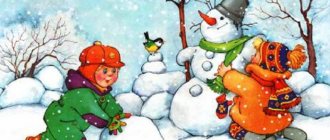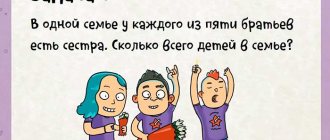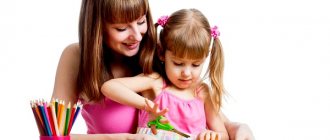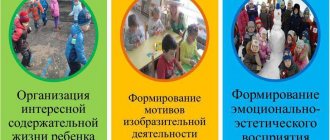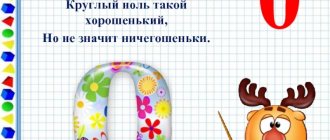Types of theatrical activities in kindergarten
Municipal educational institution
“School No. 12 named after Hero of the Soviet Union F.M. Safonov"
urban district of Samara
Types of theatrical activities in kindergarten
Completed by teachers:
Nasonova Evgenia Vladimirovna
Kuldubaeva Natalya Leonidovna
Samara 2022
Theatrical activities are the most common type of children's creativity. By participating in theatrical activities, children get acquainted with the world around them in all its diversity, and the child wants to translate all his inventions and impressions from the surrounding life into living images and actions. Entering the character, he plays any role, trying to imitate what he saw and what interested him. Theater is an accessible form of art for preschool children, developing artistic abilities, aesthetic taste and communication skills, as well as promoting the moral education of children. Theatrical activities teach children to be creative individuals, capable of perceiving novelty, the ability to improvise in a theatrical game, which is the acting out of literary works (fairy tales, short stories, specially written dramatizations). The heroes of literary works become characters, and their adventures, life events, changed by children's imagination, become the plot of the game. The peculiarity of theatrical games is that they have a ready-made plot, which means that the child’s activity is largely predetermined by the text of the work.
- Goals and objectives
expand children’s knowledge about the world around them, in particular, children become familiar with the genres of theater, its structure and types of productions;
- to form the creative, independent activity of the child;
- speech develops
- vocabulary is enriched;
- memory, imagination, imaginative thinking develops;
Types of theatrical activities
Theater on the stand
The essence of a stand theater is that scenery and character figures are attached to a certain surface. Stand games include:
- flannelograph is a board on which fabric is stretched, while the figures are usually attached with Velcro, and the child makes up the plot of a certain fairy tale, while pronouncing his role.
Tabletop theater
This type of theater takes place on a table, so the characters and scenery are small. Such a theater could be:
- paper (or cardboard) - characters and necessary attributes are cut out according to templates;
- magnetic, consisting of a board and characters on magnets;
- from natural materials (from cones, dry leaves, chestnuts or acorns),
- wooden.
- there can be one board, but several sets for fairy tales);
Theater on hand
The plots are played out using puppets that are placed separately on each finger - this is called a finger theater, or in the form of a glove for the entire palm - it is called a glove theater. In turn, such a theater needs a screen. Small sizes depending on the size of the characters. And most importantly, with the help of theater, a child opens up the fascinating world of a fairy tale, which he can create or remake at will. It can be noted that finger and glove theater develops fine motor skills in children and affects the formation of speech and memory. The peculiarity of this type of theatrical activity is that the characters of the finger theater are made from scrap materials, for example, from:
- cardboard;
- fabrics;
- tennis balls;
- plastic bottles, plates, glasses;
- matchboxes.,
- crocheted
Horse Theater
Theater, denoting a type of theatrical activity in which puppets are fixed above human height, was introduced by Russian puppeteers in the 16th century.
There are several types of horse theater:
- cane (the doll is attached to a high cane);
- bibabo (the principle of glove theater, the only difference is that the character acts from behind a high screen);
Floor theater
For such productions, marionettes are used. Since it is very difficult to control them, children remain spectators in the performances. But this does not at all deprive the productions of the element of real miracle for kids.
Shadow
theater.
It requires a screen of white fabric, black flat characters on sticks, and a bright light source behind them that allows the characters to cast shadows on the screen. The image can also be obtained using your fingers. The show is accompanied by appropriate sound.
Theater of Spoons.
The simplest and most accessible puppet theater for children. Spoon dolls can be wooden or plastic spoons. Templates of cut out and printed faces of animals or people are glued onto spoons. You can also stick plasticine on spoons or draw the faces of fairy tale characters with your children. The kids really like this type of activity, inventing and embodying characters from fairy tales
Attributes for theatrical activities
In our kindergarten, in the theatrical corner, we have a mobile screen with which children play theatrical games. The screen can be decorated according to your choice or according to the plot of a fairy tale.
Costume performances
These are dramatizations and performances that show children wearing costumes. Children transform into the image of a fairy-tale hero and character. Such presentations require careful preparation. Usually used only for special occasions: matinees, open classes. In addition, costume performances are points of control for the work of the theater studio.
By doing theater with children, we will make your children’s lives interesting and meaningful, filling it with vivid impressions and the joy of creativity. And most importantly, children will be able to use the skills acquired in theatrical games in everyday life.
List of literature
: https://pedsovet.su/load/309-1-0-53882;
https://melkie.net/vidy-deyatelnosti-v-dou/teatralizovannaya-deyatelnost-v-detskom;Antipina A.E. Theatrical activities in kindergarten. - M.: TC Sfera, 2006.
Exercises
Do you know that exercises for the development of speech, voice and breathing modernize the baby’s speech apparatus. If he performs a game task in the form of an animal or a fairy-tale character, he will be able to better control his body and learn the plasticity of movements. It should be noted that performances and theatrical games give children the opportunity to immerse themselves in a world of fantasy, teach them to evaluate and notice their own and others’ mistakes. And they do it with great interest and ease.
The kids loosen up and become more sociable. Now they clearly formulate their own thoughts and tell them publicly, they feel and understand the universe more subtly.
As a rule, theater practice classes should provide children with a chance not only to cognize and study the surrounding space through the study of fairy tales, but also to live in accordance with it, to receive pleasure from each successfully completed lesson, from classes, and from a variety of activities.
Program tasks
The program for theatrical activities in kindergarten includes the creation of performances. Work on the works is based on original plays that introduce children to fairy tales.
The program performs the following tasks:
- Activates children's cognitive interest.
- Develops visual and auditory attention, observation, memory, resourcefulness, imagination, fantasy, imaginative thinking.
- Eliminates stiffness and tightness.
- Forms the ability to respond unhindered to a command or musical signal.
- Teaches you to coordinate your actions with other kids.
- Fosters contact and friendliness in relationships with peers.
- Teaches how to improvise on the themes of familiar fairy tales and dramatizations.
- Improves coordination of movements and sense of rhythm.
- Develops musicality and plasticity.
- Develops the ability to be evenly placed on the stage and move along it without pushing each other.
- Develops speech breathing and correct articulation.
- Develops diction using poetry and tongue twisters.
- Requires you to clearly pronounce consonants at the end of a word.
- Replenishes vocabulary.
- Teaches you to find words that correspond to given characteristics.
- Teaches you to master intonations that reflect the most important feelings.
- Introduces the creators of the play.
- Introduces theatrical terminology.
- Introduces the structure of the stage and auditorium.
- Develops a culture of behavior in the theater.
As a result of such training, children acquire the following skills and abilities:
- Kids learn to act in a coordinated manner.
- They know how to relieve tension from certain muscle groups.
- Remember the necessary poses.
- Describe and remember the appearance of any baby.
- They know about eight articulation lessons.
- They know how to take a long breath simultaneously with an imperceptible short sigh.
- They tell tongue twisters at different paces.
- They can pronounce tongue twisters with different intonations.
- Able to build a simple dialogue.
- They are able to form sentences with given words.
Communication skills
Have you ever studied a report on theatrical activities in kindergarten? No? It contains a lot of useful information. For example, from such documents you can find out that today the most important thing is the formation of communicative prestige, which is the main indicator of the development of a child’s personal qualities.
In general, communicative prestige consists of a set of skills that determine a preschooler’s desire to contact people. This also includes the ability to create a dialogue, the ability to communicate to plan joint activities, the ability to communicate using non-verbal means (gestures, facial expressions), and the manifestation of goodwill towards partners.
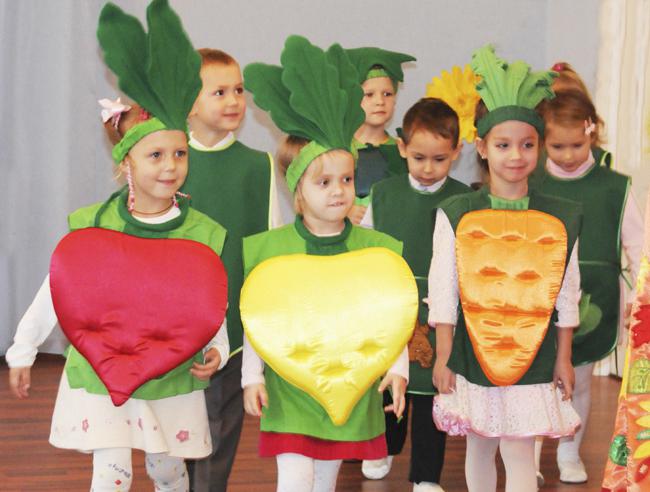
At the moment, the issue of developing communication skills in children is very acute. After all, the speed of his development, his attitude towards people, and his sense of self depend on the ease of a child’s communication with people.
Self-education in theatrical activities in kindergarten provides for the development of communication skills in children. To achieve this goal, it is necessary to create an environment in which every child could convey his emotions, desires, feelings and views, both publicly and in simple conversation. Here kids should not be embarrassed to listen.
The theater provides enormous assistance in this, as it unites children with a common idea and experiences. The children come together through interesting activities that allow each participant to show their activity, creativity and individuality.
In the process of theatrical activity and preparation for it, children begin to cooperate with each other, strive to communicate with peers, and develop communication skills.
Kids and theater
Theatrical activities in the junior group of kindergarten introduce the child to the world of theater, and he recognizes what fairy-tale magic is. Speech is the basis of the mental education of children, therefore the most important task of the educational process is the development of speech. As a rule, theatrical performances are used to develop speech.
In general, the possibilities of theatrical activity are endless. Taking part in it, kids explore the world around them through colors, images, sounds, and skillfully asked questions force them to analyze, think, make generalizations and conclusions.
The improvement of speech is very closely related to the formation of the mind. In the process of working on their own statements, the expressiveness of the characters’ remarks gradually activates the baby’s vocabulary, the intonation structure of speech and its sound culture are modernized.
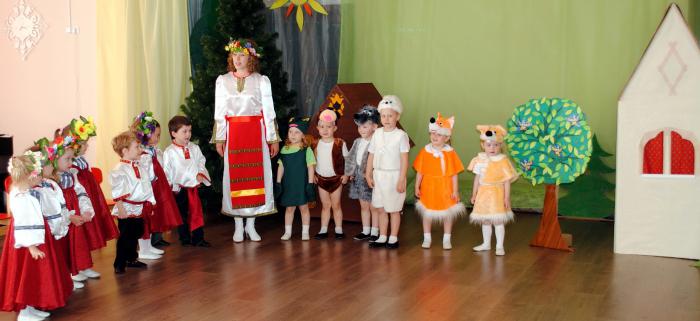
Why is theatrical activity in kindergarten so interesting? Fairy tale scenarios confront children with the need to clearly, clearly and clearly express their thoughts. The role played, as a rule, and entering into a dialogue with another character improve the grammatical structure of dialogical speech. In this case, the educational possibilities are colossal: children learn to empathize with the characters of the productions and at the same time begin to feel the mood of the audience. Humane feelings awaken in them - the ability to show kindness, protest against falsehood, participation.
Types of fairy tales
It is known that the following types of fairy tales are used in fairy tale therapy:
- An artistic or folk tale. This type provides moral and spiritual education, cultivates feelings of duty, mutual assistance, empathy, sympathy, and so on. For example, the fairy tale “Turnip” clearly reflects the support and help among people, without which it is impossible for one person to achieve a high goal.
- An educational and educational fairy tale expands the child’s knowledge about our planet and the principles of behavior in different life situations. These are mainly fairy tales in which numbers and letters are animated.
- Diagnostic narratives help determine the child’s character and reveal his attitude to the world. For example, if a girl likes fairy tales where the main character is a cowardly bunny, then you might think that she is very calm, shy and possibly timid.
- Psychological legends teach a child to fight his fears and failures. Together with the hero, he gains confidence in his abilities.
- Meditative tales create an atmosphere of positivity, comfort, calm, relaxation, excitement and stress relief. This category of fairy tales does not have evil heroes, conflict situations and the eternal struggle against evil.
